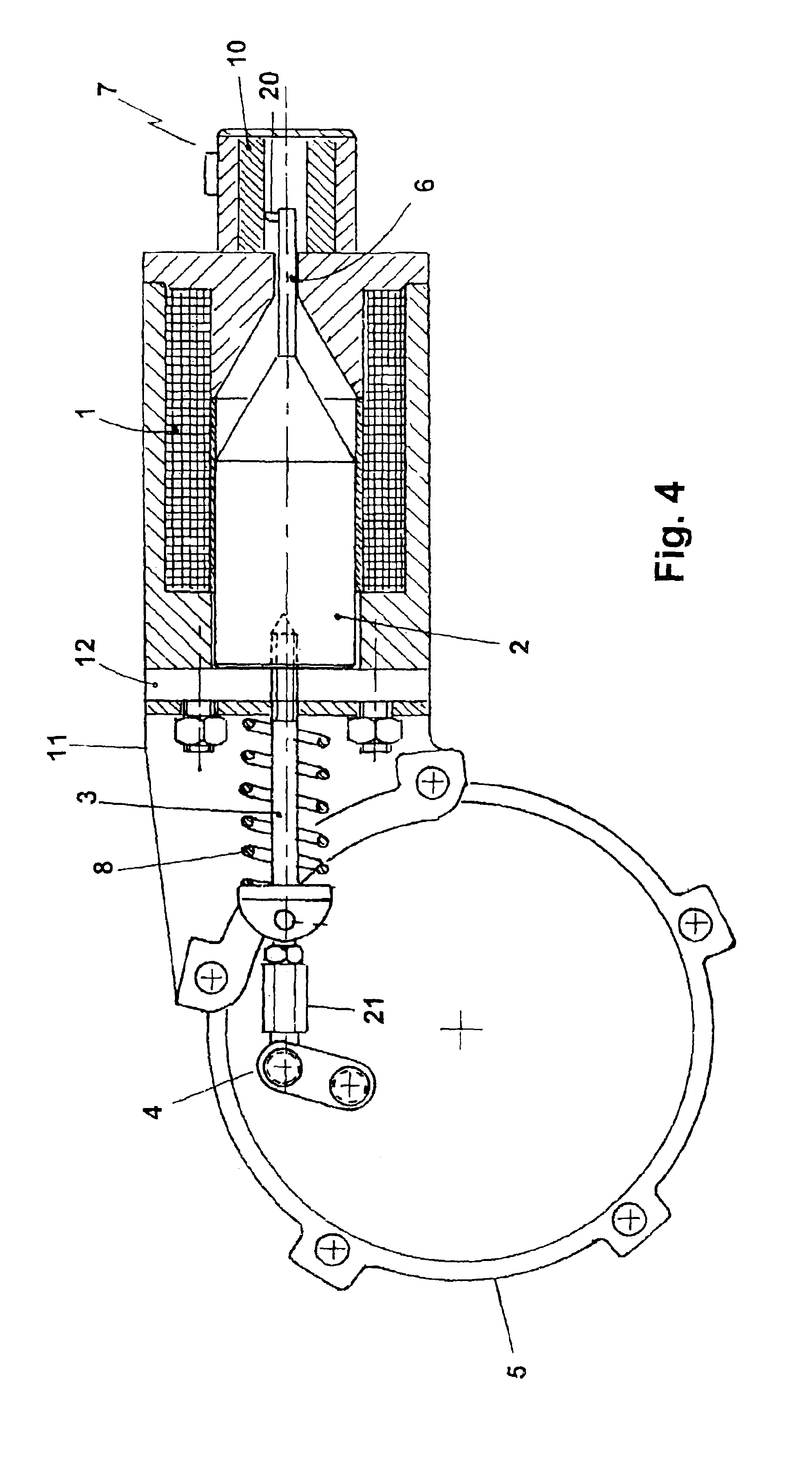Electromechanical actuator for the regulation of the turbocharger of internal combustion engines
a technology of electric motor and turbocharger, which is applied in the direction of electromagnets, coils, magnetic device details, etc., can solve the problems of high cost and complexity, and achieve the effects of simplifying installation and transmission, reducing the complexity of the motor mechanism, and being convenient to us
- Summary
- Abstract
- Description
- Claims
- Application Information
AI Technical Summary
Benefits of technology
Problems solved by technology
Method used
Image
Examples
Embodiment Construction
[0037]In substance, the invention therefore consists of an electromechanical actuator with which, on the variation of the engine's operational conditions, the operational conditions of at least the turbocharger, through which the supercharging of the same engine is regulated, are changed.
[0038]The actuator, the object of the present invention, through which the pivot point of the turbo charger is activated, is made up of a combination of an electromechanical group and of an electronic regulation and control circuit. The electromechanical group, schematized in FIG. 4, comprises the solenoid 1 provided with a ferromagnetic nucleus 2, normally created with a ferromagnetic material having minimal hysteresis.
[0039]Said ferromagnetic nucleus, slides within the solenoid 1 and is furnished with a rod 3 that interacts with the pivot point 4 of the turbocharger 5.
[0040]The ferromagnetic nucleus 2, in the solution exemplified in the drawing, through lever 6 activates the position sensor 7, int...
PUM
 Login to View More
Login to View More Abstract
Description
Claims
Application Information
 Login to View More
Login to View More - R&D
- Intellectual Property
- Life Sciences
- Materials
- Tech Scout
- Unparalleled Data Quality
- Higher Quality Content
- 60% Fewer Hallucinations
Browse by: Latest US Patents, China's latest patents, Technical Efficacy Thesaurus, Application Domain, Technology Topic, Popular Technical Reports.
© 2025 PatSnap. All rights reserved.Legal|Privacy policy|Modern Slavery Act Transparency Statement|Sitemap|About US| Contact US: help@patsnap.com



